ART YARD Advanced Studio on zoom began the week spectacularly with a session taught by ART YARD Artists Advisory Board Member and Teaching Artist Jordan Hendrickson.
Ed expertly summarizes this session: “Jordan, an accomplished filmmaker and animation artist, started his career studying painting and drawing. It was here he learned the fundamental skills in visualization: figure drawing, posing the figure, composition, and creating a point of view.

Jordan has completed an animated film entitled, The Giving Tree an animation called, The Ballad of Joe Pass and is now finishing, Janke, a documentary about his mother and her friends who moved from the US to Gambia, to reinvent themselves and start a new life in a place where the past would not define the future.
Jordan challenged us to draw storyboards of, Mega, a character from, Janke. Mega is based on a real person, who lived a hard-scrabble life in NYC, got waylaid by misdeeds and crime, and sought redemption by moving to Gambia, far away from the projects where he grew up with his mother and an abusive step-father, to make amends.

Storyboards, Jordan explained, are essential to all filmmaking. Artists are commissioned to sketch out the scenes to help the movie directors set up their shots, and to show the actors exactly where they are to stand in the scenes. Storyboard sketches are done quickly; they do not show a lot of detail. They often show the lighting sources and camera positions in addition to the scenes and actor positions.
Drawings of Mega angry & confused:
Eugenie comments: “It was particularly interesting to learn about camera angles and perspectives in Jordan’s informative session about storytelling and he brought me a new appreciation and understanding of how films are shot.”
How to build a visual story using storyboard drawings:
1. Design your characters, drawing them in different positions. This will help the other animators on your project keep the look consistent.
2. Pick an era that your story takes place; create a character model sheet showing poses, lighting, facial expressions, and key poses; create rules so everyone can draw the same thing.
3. Draw the storyboards quickly, showing the lighting and point of view.
Drawings of Mega jumping a wall:
Aspect Ratio
Wide movie screens are in 16:9 proportion. Computer screens are 5:4. Make you storyboard rectangles in the appropriate aspect ratio. Your job is figure out where things go.
Types of Shots

1. Establishing Shot - this is the opening shot which tells the audience where the story is taking place. This is also known as a, Wide Shot, or possibly an Extra Wide Shot.

2. Full Shot - Figure is big, takes up the whole screen.

3. Cowboy Shot - this is a 3/4 shot, shows the upper 3/4's of the figure.

4. Medium Shot - shows top 1/2 of the figure.
5. Medium Close Up - moves in closer showing more details.
6. Extreme Close Up - looking into eyes, cell phone, etc.
7. Worm's Eye View - the subject is looking up at the view, in fear.
8. Over the Shoulder View - the face of the figure in the foreground is obscured because it is in front of the picture plane.
9. Dutch Angle - camera at a tilt, often used to show mania.
Composition: How you set up your pictures:

1. Rule of Thirds - Directors like to divide their shots in third, both vertically and horizontally, creating nine "Zones" wherein the characters and images exist.
2. Symmetry (Some scenes present better when laid out symmetrically - symmetry make the scene more rigid.
3. Depth of Focus (In this technique, parts of the scene are shot out of focus to emphasize the main characters or main parts of the scene.
4. Pattern Breaking (This technique places an odd element or two into a repetitive pattern scene to create discord of to make one element stand out from the others.
5. Dirtying the Frame - sometimes filmmakers allow rain to drip into the camera lens, or even smears of dirt, to make the scene look more realistic. Most digitally generated images look fake because everything in the scene is rendered too perfectly. Dirtying is often used in war films.
After going over these techniques, we set to work making two and three minute sketches of Mega in various situations.
Karla comments: “Thanks to Jordan for a very interesting lesson with great examples of digital and film, composition and effects. I will definitely look at movies much differently now! Everyone approached their sketch segments with challenging determination!! Lots of humor and WOW….those chickens of Eugenies!!! I found that with each sketch I could draw more freely and concentrate on quickly capturing the key pieces of a story rather than drawing in great detail.”
Our final piece was a six scene storyboard depicting an episode where Mega goes into a Chick-fil-A fast food restaurant and orders a chicken sandwich.
The resulting drawings were hilarious and speak for themselves.










Marilyn pipes in: “I very much enjoyed Jordan’s class, which was so well structured to get us ready for the challenging storyboards. A great deal of humor came through, especially with the appearance of the trash can in more than one storyboard.”
Kudos to Jordan for a superb, well organized lesson.”

Jordan sums up his experience with this session: “I had a fantastic time at ART YARD Advanced Studio this past Monday. Everyone on the Zoom was attentive, fun, and extremely talented. I always love how students take the prompts and do something I'd never think of -- that blows me away!!"
Between preemptive school snow closings, and a bout of the flu, we postponed Tuesday’s Advanced Studio in person class. Jordan will be back soon for part two of his exciting storyboard session. We can’t wait!

ART YARD Teaching Artist Evelyn Beliveau reports on the exciting goings on today at ART YARD Art Matters at PS 6: "In week 2 of Aleatoric Drawing at PS 6, we made great progress! Alongside me (Evelyn) and Dennis were the wonderful Gabriela and Evelyn Gabriela—with much merriment (and just a little confusion) about the overlap of names on our team today! We were glad to have many hands on deck as students dove into our second week of making art through chance operations.


In this project, students are creating artwork by filling each box of a grid with shapes and shading according to the results of random dice rolls and coin flips. Students in each class remembered vocab words like “random,” “chance,” “hatching,” and “cross-hatching” from last week’s presentation.
Each class has a set of rules to follow—a structure for their random actions. We went over the step-by-step process in detail to jog students’ memories and highlight a few tweaks to the rules. This week, students got started on their final pieces, which will be displayed in the gallery—and that meant switching from pencils to markers! We spent a few minutes on a practice sheet so students could get used to the different tool. For the 3rd Grade class, this also added an additional step to their process: rolling a die to select a blue, green, or yellow marker to use for each square.

Students worked diligently and asked great questions as they continue to commit their new art vocab to memory. We also had an enthusiastic round of critique in each class, with students noticing similarities and differences between their classmates’ styles of hatching or stippling, connections between one sheet and another when all the pieces were laid side by side, and real-world comparisons to pineapples, ice cream cones, shoes, shark teeth, and more!"
Other Art News
Ardelia shares an update on her painting in progress!

Vee just completed a new print made with screen printing shellac and markers. They are considering using the piece as the invitation for their thesis show.

I hope you will all plan to join me for my (Meridith) two upcoming solo museum exhibitions. Please note: There is a date change from my last Save the Dates posting!

🩷❤️💚🧡













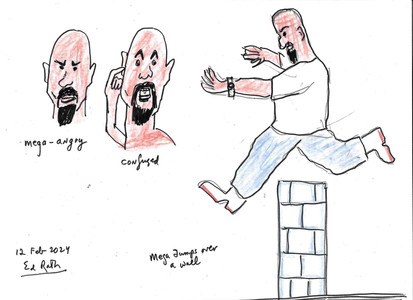




























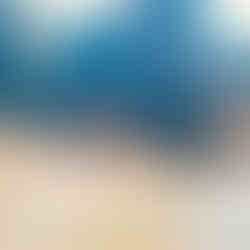



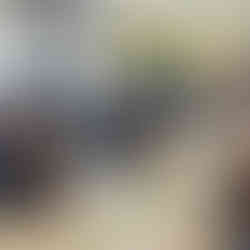

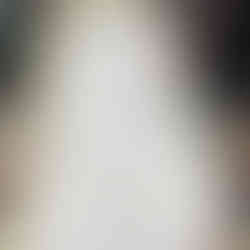





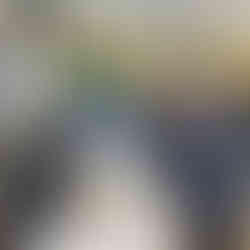


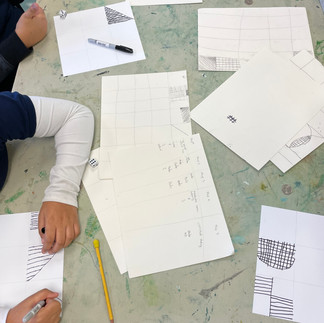

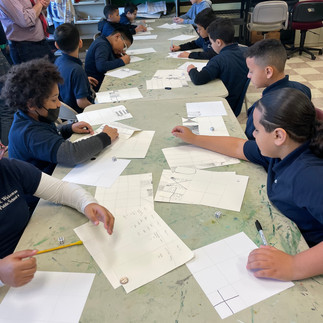




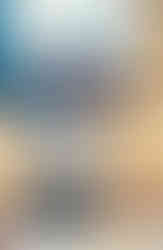




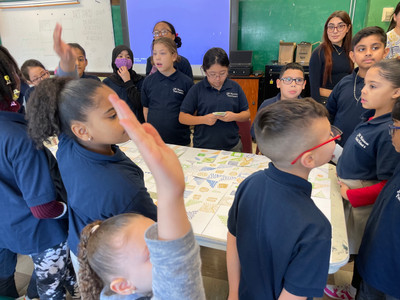


Comments